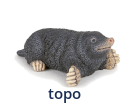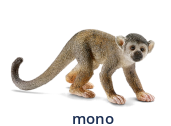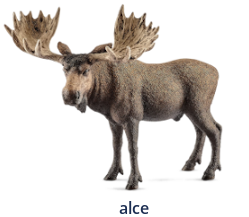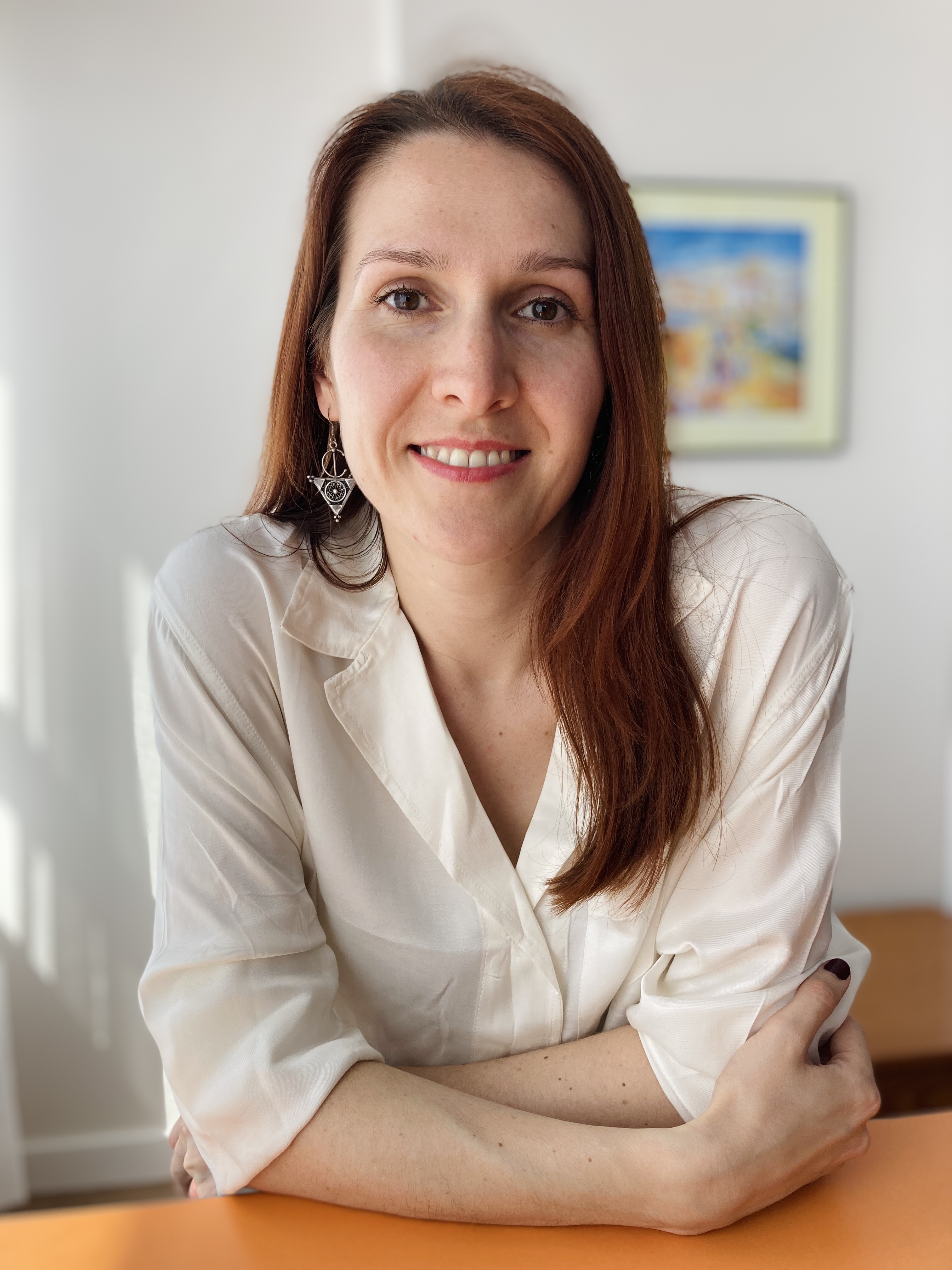If Montessori is familiar to you, you’ve definitely heard the words 3 period lesson. If you haven’t, even better, you can read what follows and you will surely understand.
The 3 period lesson is one of the most used Montessori methods to teach a new concept, making sure it is understood by the child. This simple method is highly attractive and efficient, involving the child in different tasks, not just mentally, but also physically.
So how does it work?
We learn best through experience and from examples, so I will invite you to do this exercise with me and imagine you are a child and I will teach you the names of 3 mammals, showing you 3 miniatures. To make it more authentic, I will use Spanish, for you to get to feel a bit of the difficulty the child is in (to him, some words in English are unknown, so it is like learning a new language).
First period
I will show you each miniature, one at a time and name it: topo, mono, alce.



Second period
I will involve you in performing different actions with the miniatures.
Place mono on your head!
Place topo next to something yellow!
Show me alce!
Touch mono with your pinkie!
Place topo next to a plant!
And so on, until I make sure you can easily identify each of the 3 mammals, performing the tasks quickly with each of them. This is a sign that the concepts are clear to you, because you can identify mono, topo, alce, even though they are involved in different actions you perform.
I will not correct you if instead of bringing me mono, you bring me alce, I will simply tell you the task again: This is topo. Please place alce on your head.
If I notice it is quite difficult for you to identify them after a few requests, I will redo the first period.
I will show you the miniatures and name each of them. Afterwards, we will go to the second period.
Only when I’ve made sure you can easily identify the 3 mammals, will I go to the third period.
Third period
I will ask you what each of the mammals is called, meaning you will be naming them, saying their names out loud.
What is this called?/What is this? and I point to alce (moose).
If you don’t answer correctly, we will redo the second period. We can also redo the second period with just 2 of the mammals, if you already know one of them.
Remember, the purpose is for the child to understand the concept at his own pace and to feel that he practice and make mistakes. We can always redo the previous periods, in order to help him.
So, let’s recap!
First period: naming the objects.
Second period: involving the child in performing different actions with the objects, using their names, as creatively and as fun as possible.
Third period: the child names the objects.
Key points!
- You can do this type of lesson with younger children, who can’t speak yet, by only doing the first 2 periods, naming and performing a few actions that he can understand and do.
- If a child is uncomfortable naming the objects, don’t force him. He still needs some time. It doesn’t necessarily mean he doesn’t know them, especially if the second period goes well. He may just be insecure, shy, in need of some encouragement and of patience.
- During the second period, give the child tasks appropriate to his level, tasks that he can understand and perform. For example, you won’t say to a child who doesn’t know the colors yet Place moose near the green book. You are setting him up to fail. He needs to enjoy this activity and be successful in it.
- Try using the inarticulate form of words. For example: Show me moose vs. Show me the moose. It doesn’t sound as natural, but the child needs to learn the basic name of the word, in other words, the dictionary form. Later, you can draw his attention to using the article, when he/she is ready for it. Don’t worry, he will not assimilate the inarticulate form of words in every day speech, because his mind absorbs the syntax used in the daily language and uses it the same way.
- You can use the 3 period lesson with any new concept, with objects, pictures, real elements (leaves, fruit, etc.). The important thing is to have a concrete representation of the concepts you teach. That is how you create a basis for that concept in the child’s mind, to which you can to attribute a name.
- Use a small number of objects when doing a 3 period lesson. With a young child, under 2.5 years old, use 2 objects. With an older one 3 objects. That helps the child focus and not get distracted by too many objects and names.
I hope this has been useful and happy working!

